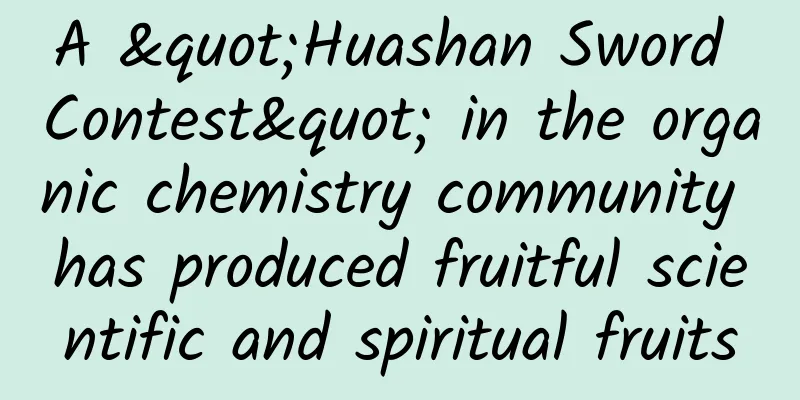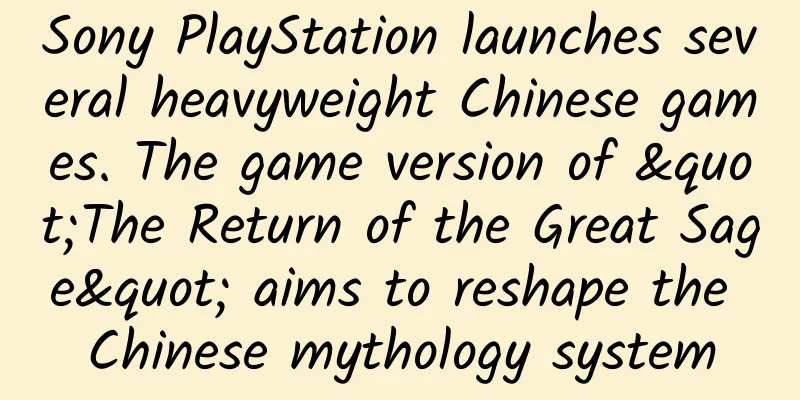A "Huashan Sword Contest" in the organic chemistry community has produced fruitful scientific and spiritual fruits

|
In the field of organic chemistry, a long-lasting debate from the 1960s to the 1980s not only profoundly affected the development of the discipline, but also aroused widespread attention and discussion in the fields of philosophy of science and epistemology. More importantly, it left valuable scientific and spiritual wealth for later organic chemistry researchers. Note: Non-professional readers can skip the technical details in the boxes in this article (see the "Fanpu" public account for details) without affecting the overall understanding. Written by Zheng Chao (Researcher at Shanghai Institute of Organic Chemistry, Chinese Academy of Sciences) Introduction | An unusual crystal structure On July 5, 2013, the American journal Science published a research paper titled "Determination of the crystal structure of 2-norborneol-based nonclassical carbon cations". Chemists from the University of Freiburg and the University of Nuremberg in Germany prepared a 2-norborneol-based nonclassical carbon cation. Its crystal structure was successfully determined at a low temperature of about -233 degrees Celsius. The results showed that there was a five-coordinated carbon atom in the 2-norbornyl carbon cation, as well as a "three-center-two-electron bond" formed by it. Its scientific significance, in the words of a review article published in the journal Chemical World of the Royal Society of Chemistry: This work provides the most definitive evidence about the structure of non-classical carbon cations, thus completely ending a non-classical carbon cation debate that started in 1949, prevailed in the 1960s-1980s, and had a far-reaching impact on the entire field of organic chemistry. Figure 1. The crystal structure of 2-norbornyl carbocation measured at 40 K. C6 is a pentacoordinated carbon atom, and a three-center-two-electron chemical bond is formed between C6–C1–C2. | Source: Science 2013, 341, 62. Interestingly, however, when asked whether HC Brown, the most ardent opponent of the non-classical carbocation theory, would change his position because of this crystallographic evidence (Brown died in 2004), JD Roberts, the chemist who first used the term "non-classical carbocation", responded at the age of 95: "No, Herb (Brown) will always be Herb, no matter what happens..." So what exactly are nonclassical carbocations? What is so special about them that they have been debated for decades by leading organic chemists? And what is the relevance of this long-standing debate to people today? Protagonist | Carbocation: Reactive intermediate in organic reactions "Carbocations" are a common intermediate in organic chemical reactions. Because they carry a positive charge, they are very eager to combine with negatively charged species to form stable product molecules (these negatively charged species are called nucleophiles, and the reactions between them are called nucleophilic addition reactions). In 1902, JF Norris and F. Kehrmann independently discovered that colorless triphenylmethanol could be treated with concentrated sulfuric acid to obtain a dark yellow solution. Later studies confirmed that this was due to the formation of a stable triphenylmethyl carbocation. However, most carbocations are not so stable. They are very active and can participate in many reactions such as addition, elimination, substitution and rearrangement. Sometimes, due to external factors such as spatial separation or charge delocalization, carbocations cannot fully combine with negatively charged species. However, "although we cannot reach it, our hearts yearn for it", even if it is close to or far away from the negatively charged species in space and their molecular orbitals partially overlap, the carbocations can be relatively stable. When there are no suitable negatively charged species in the external environment, the carbocations also have sufficient adaptability and can transform to a more stable state by adjusting their own structure. Classical carbocations have a three-coordinate structure, and are called primary/secondary/tertiary carbocations according to the number of hydrogen atoms attached to the central carbon. Generally speaking, their stability order is primary carbocation < secondary carbocation < tertiary carbocation. This is because the more alkyl substituents there are around the carbocation, the more its positive charge can be stabilized by the σ electrons of the carbon-hydrogen bond on the alkyl substituent through hyperconjugation. It is precisely because of this difference in stability that secondary carbocations often rearrange to form more stable tertiary carbocations before other reactions occur. As early as 1899, G. Wagner pointed out in his study of the chemistry of terpene derivatives that under acidic conditions, the conversion of isoborneol to camphene involves a rearrangement of the molecular skeleton. In the 1920s, H. Meerwein used the idea of carbocations to propose the correct mechanism of this rearrangement reaction, and the reaction was therefore named Wagner-Meerwein (W-M) rearrangement. W-M rearrangement is very common in nature, and this type of reaction is involved in the biosynthesis of many natural spices. Figure 2. Stability of carbocations and Wagner–Meerwein rearrangement reaction. | Source: World J. Chem. Educ. 2018, 6, 18. (photo on the left) and author’s drawing (other images) In the first half of the 20th century, the booming development of carbocation chemistry greatly enriched people's understanding of organic molecular structure and bonding, and provided a new window for a deeper understanding of the mechanism of organic reactions. Although under the technical conditions at the time, except for a few special cases such as trityl carbocation, people could not directly observe carbocations in experiments, but this did not prevent organic chemists from using carbocations as a powerful conceptual tool. However, at first, no one in this research boom could have expected that a controversy over the identity of a group of "non-classical" members of the carbocation family would attract so much attention in the next few decades, and even occupy the center of the physical organic chemistry stage for a time. Mystery | Mysterious experimental results A symbol of the origin of the non-classical carbon cation theory is a short article published in the Journal of the American Chemical Society in 1949. In this article entitled "The Structure of 2-Norbornyl Carbon Cation", S. Winstein and his collaborators from the University of California, Los Angeles reported the strange phenomenon they observed in the solvolysis reaction of 2-Norbornylbenzenesulfonate. Benzenesulfonate esters have a very important property: they are prone to heterolytic cleavage of carbon-oxygen bonds to form carbon cations. When acetic acid is used as the solvent for the reaction, the generated carbon cations will be immediately nucleophilically added by the acetate anion in the system, which is the solvolysis reaction of benzenesulfonate esters. By measuring the rate of the solvolysis reaction, the difference in the stability of different carbon cations can be inferred (a fast reaction rate means that the corresponding carbon cation is stable). Therefore, measuring the solvolysis reaction rate of various different structural benzenesulfonates (or their analogs) was an experiment that organic chemists who were concerned about the topic of carbon cations at the time often had to do. S. Winstein (1912~1969) | Image source: Wiki Winstein et al. found that the solvolysis reaction of 2-norbornylbenzenesulfonate is unusual in two ways. First, regarding the reaction kinetics, the reaction of exo-configured raw materials is significantly faster than that of endo-configured raw materials; second, regarding the product structure, whether exo or endo-configured raw materials are used, the product of the solvolysis reaction is exo-configured, and the enantiopure raw materials always give racemic products. Winstein pointed out that the unique molecular skeleton of borneol makes it easier for exo-configured raw materials to be converted into a carbon cation intermediate containing a "three-center-two-electron" bond (that is, three carbon atoms form a bond by sharing a pair of electrons, which is different from the ordinary chemical bond of two atoms sharing a pair of electrons) and a mirror-symmetric structure than endo-configured raw materials. He creatively used the idea of σ electron delocalization to explain the special kinetic phenomenon of the solvolysis reaction of 2-norbornylbenzenesulfonate, and proposed a new possibility for the structure of carbon cations. Borneol is an analog of the natural product borneol (also known as borneol), and they both have a unique [2.2.1] bridged ring structure. 2-Norbornylbenzenesulfonate ( 1 ) has two configurations: exo and endo. Winstein's experiment found that at 35 degrees Celsius, the rate of the solvolysis reaction of exo -1 in acetic acid is 350 times the reaction rate of endo -1 ! At the same time, the acetate ( 2 ) generated after the solvolysis of exo- 1 and endo- 1 is both in the exo configuration. In addition, exo- 1 and endo- 1 are both chiral molecules, but when enantiomerically pure exo- 1 is used as the raw material for the solvolysis reaction, the product exo- 2 is a racemic compound! Winstein believes that when the benzenesulfonate group in exo- 1 leaves to form a carbon cation, the positive charge accumulated at the C2 position can be stabilized by the adjacent C1-C6 bond. This stabilization further leads to a partial rearrangement of the molecular skeleton, forming a "three-center-two-electron" bond between the C2, C1 and C6 atoms. At this time, the molecule as a whole has a mirror-symmetrical structure, and the coordination number of the C6 atom on the symmetry plane is five! When the acetate anion initiates a nucleophilic attack, it can form a bond with C1 or C6 from the outside with equal opportunities, and finally obtain the product exo- 2 racemate. Due to the spatial mismatch, endo- 1 cannot accept the stabilizing effect of other carbon-carbon bonds in the molecule during the formation of the carbon cation, resulting in its solvolysis reaction rate being significantly slower than that of exo- 1 . Once the carbon cation is formed, the subsequent reaction results are the same as those of exo- 1 . Figure 3. Winstein’s experimental results and explanation based on non-classical carbon cations | Source: Drawn by the author After Winstein's work was published, all kinds of novel carbonium ion structures that broke through traditional barriers were designed like mushrooms after rain. Among them, the cyclopropylmethylene carbonium ion systematically studied by JD Roberts of California Institute of Technology in the United States, which attracted as much attention as the 2-norborneol carbonium ion, was also widely concerned. In 1951, Roberts formally proposed the term "non-classical carbonium ion" to describe this type of special carbonium ion structure containing a five-coordinated carbon center formed by the delocalization of σ electrons. In the view of supporters of the non-classical carbonium ion theory, this theory opened the door to a new world for the study of organic chemistry. (In the view of their opponents, it may be Pandora's box!) Several years later, Brown recalled the crazy era when non-classical carbonium ions were popular (in his opinion) and said with a bit of joking: All other carbocations can be "non-classical"! Figure 4. The “Rococo” nonclassical carbocation structure. | Source: The Nonclasscial Ion Problem. Fierce debate | Two "phenomenological" theories that neither can convince the other Winstein's nonclassical carbocation theory has not only loyal supporters, but also fierce opponents. The standard-bearer of the opposition team is HC Brown of Purdue University in the United States. Brown's most important contribution to organic chemistry is the application of boron reagents in organic synthesis reactions. 17 years after publishing the first paper criticizing the nonclassical carbocation theory, he and G. Wittig of Heidelberg University in Germany won the 1979 Nobel Prize in Chemistry for their outstanding contributions in the field of organoboron chemistry. HC Brown (1912 ~ 2004), winner of the 1979 Nobel Prize in Chemistry | Image source: Wiki Brown does not oppose the three-center-two-electron bond in the general sense. After all, in the field of organoboron chemistry where he has been deeply involved, three-center and even multi-center bonds are everywhere. The cage-like structure of higher boranes based on such three-center and multi-center bonds has been confirmed by X-ray crystal diffraction experiments in the 1950s. What Brown firmly opposes is the use of three-center-two-electron bonds (or the stabilizing effect of σ electrons on adjacent three-coordinated carbon cations) to explain the difference in the rate of the solvolysis reaction of 2-norbornylbenzenesulfonate with exo and endo configurations. In his view, traditional organic chemistry theory, especially the "steric effect" familiar to chemists, can satisfactorily explain this experimental phenomenon. In line with the "Occam's razor" principle of "do not add entities unless necessary", the concept of non-classical carbon cations is proposed out of thin air, which is of no benefit to understanding the results of the solvolysis reaction of 2-norbornylbenzenesulfonate and its analogs. Brown proposed another explanation for the results of the solvolysis reaction of 2-norbornylbenzenesulfonate based on the "steric hindrance effect". Every atom and functional group in the molecule occupies a certain volume in space, so they can "feel" the crowdedness or emptiness of the space. In many cases, when atoms and functional groups are in an empty environment (small steric hindrance), the energy is lower and chemical reactions are relatively easy to proceed; in a crowded environment (large steric hindrance), the situation is just the opposite. Brown believes that the special If two classic three-coordinate carbon cations that are mirror images of each other are generated and are in a fast equilibrium state, racemic solvolysis products can also be produced. Figure 5. Brown's explanation of the results of the solvolysis reaction of 2-norbornylbenzenesulfonate based on steric effects and the classical carbon cation structure | Source: Drawn by the author Around the issue of non-classical carbocations, the "affirmative side" represented by Winstein and the "opposition side" represented by Brown had a long debate. In the debate, the logic of evidence for both sides is: first, construct a variety of model systems similar to the structure of 2-norbornyl carbocations, then verify that the experimental results of the model system can be explained by non-classical carbocations (or steric effects), and finally prove the correctness of their own theory on the 2-norbornyl carbocation system by analogy (or deny the correctness of the other party's theory). In this way, this debate actually turns into a competition between two a posteriori theories for the explanatory power of specific experimental results. Unfortunately, both competing theories are incomplete and non-quantitative "phenomenological" theories. Their scope of application and transferability are flexible and even arbitrary. Therefore, in the debate, both sides often selectively emphasize evidence in their favor and ignore unfavorable evidence. As a result, both sides can neither convince the other side nor are willing to succumb to the other side. In the formally published academic papers, both sides of the debate maintained a minimum of restraint, as well as respect and appreciation for each other's views. However, if you carefully read the biographies, interviews and other text materials of the parties involved that are not preserved as academic archives, you can clearly feel the gunpowder smell in the debate at that time, and even the scene of the "enemy" and the "enemy" fighting almost like a party against a party. In 1969, the American Chemical Society's "Chemical Research Reviews" journal planned to organize a "symposium in-print" and invited Winstein and Brown to publish a controversial article on the issue of non-classical carbon cations. However, this plan was aborted due to Winstein's sudden death. It was not until 1983 that a group of controversial articles on the issue of nonclassical carbocations were finally published in the journal "Chemical Research Reviews". The author representing the opposing side was still Brown, while the representatives of the affirmative side were the second-generation leaders of nonclassical carbocation theory: GA Olah of the University of Southern California and M. Saunders of Yale University. The title of their article is very eye-catching: "Conclusion of the classical-nonclassical ion controversy". Unlike their predecessors who explored the kinetics of solvent decomposition reactions and stereochemical experiments, Olah, Saunders and others used new technical means to make it possible to directly determine the structure of 2-norbornyl carbocations. In their view, the nonclassical structure of 2-norbornyl carbocations is already a fact, and there is no room for doubt. After the publication of this controversial article, Olah and others no longer continued to study the structure of 2-norbornyl carbocations, and this debate spanning more than 20 years finally came to an end. However, the new structural evidence did not convince Brown. In Brown's view, there was no connection between the structural evidence obtained under extreme conditions and his original intention of getting involved in this debate - how to explain the rate of solvolysis of 2-norbornylbenzenesulfonate and its analogs. At the end of a short review published in 1986, Brown even said sarcastically: Since we cannot stop them (using the term non-classical carbon cations), we might as well enjoy their "spectacle" from the sidelines. (…we cannot stop them. However, we can enjoy the spectacle.) Figure 6. Papers published by Brown, Olah, Saunders, et al. in the same period in 1983 in Chemical Research Reviews. | Source: Acc. Chem. Res. 1983, 16, 432; 1983, 16, 440. Breakthrough | New structural characterization methods bring a turning point The non-classical structure of 2-norbornyl carbon cation was initially proposed as a theory to explain the special results of the solvolysis reaction of the corresponding benzenesulfonate. The long debate between Winstein and Brown et al. seems to prove that the causal relationship between this explanatory theory and experimental phenomena is difficult to prove or disprove within the theoretical framework of organic reactions. However, the non-classical carbon cation itself is a theoretical hypothesis about molecular structure. Therefore, it can exist completely independently of the parent problem that produces it. In fact, directly detecting the structure of 2-norbornene carbon cations was the wish of many physical organic chemists in the 1950s and 1960s. However, due to the limited molecular structure characterization methods at that time and the extremely short life span of carbon cations, this wish seemed particularly unrealistic. Fortunately, this problem soon found its solver among the new generation of scholars. The representative of them was a little-known young man who was still working at Dow Chemical Company in Canada - GA Olah. GA Olah (1927 ~ 2017), winner of the 1994 Nobel Prize in Chemistry | Image source: Wiki The "diamond drill" that Olah relies on is superacid and nuclear magnetic resonance spectroscopy technology. Nuclear magnetic resonance (NMR) is a physical process in which atomic nuclei with non-zero magnetic moments are excited by radio frequency radiation of a certain frequency in an external magnetic field. The slightest change in the distribution of the electron cloud outside the nucleus can cause a change in the radio frequency suitable for exciting the nucleus. Therefore, the NMR phenomenon can very sensitively identify the different chemical environments between the same nuclei. Today, NMR spectroscopy has become an indispensable tool for organic chemistry research, and can be regarded as the eyes of organic chemists to observe molecular structures. Many hospital imaging departments are equipped with magnetic resonance imaging (MRI) equipment, which uses magnetic fields and radio frequencies to excite the hydrogen nuclei in the patient's body (mainly water) and image them to identify possible lesions. However, more than 70 years ago, when NMR spectroscopy was just emerging, not many people could foresee that it would play a pivotal role in future organic chemistry research. Roberts, the originator of the term non-classical carbon cation mentioned above, was one of the pioneers in promoting NMR technology in the field of organic chemistry. However, NMR spectroscopy alone is far from enough, because the time scale of ordinary NMR is too long (about the order of milliseconds). This means that carbocations are usually quenched before they can be detected by NMR instruments (the lifetime of carbocations is generally considered to be on the order of 10^(–10) to 10^(–6) seconds). So how can we extend the lifetime of carbocations? Olah creatively proposed the "superacid" strategy to solve this problem. There are two main ways for carbon cations to be quenched: proton elimination and nucleophilic addition. Olah believes that if carbon cations are generated in situ in a superacidic medium, the possibility of the two quenching reactions of carbon cations will be greatly reduced, and their lifespan will be extended, because the alkalinity and nucleophilicity of the anionic species in the medium are extremely weak. After a long period of exploration, The lifetime of the electrons is long enough that their signals can be picked up by NMR equipment. In his later years, Olah often recalled the Ninth Reaction Mechanism Conference held at Brookhaven National Laboratory in New York in 1962. They called him aside and warned this young man from the industry: Your work is probably wrong. If by any chance you find an experimental method that can directly determine the structure of the carbon cation, you must use it to prove that the structure of the 2-norbornyl carbon cation is non-classical (or classical)! Olah accepted the challenge of the two big guys, but used superacid media and NMR spectroscopy to observe 2-norborneol-based carbon cations The rearrangement reactions are "frozen", so the spectrum has a high resolution. By comparing the NMR signals with other model compounds, the non-classical structure of the 2-norbornyl carbocation can be identified. Olah also used other advanced spectroscopic techniques, including X-ray photoelectron spectroscopy to measure the signal of 2-norbornyl carbon cation, and the results also supported the non-classical structure. In the same year, scientists at IBM measured the solid-state NMR signal of 2-norbornyl carbon cation at an extremely low temperature of 5 K (about minus 268 degrees Celsius), at which time the chemical environment of C1 and C2 atoms was still exactly the same (but different from the signal of C6 atom). Only the non-classical carbon cation structure is a reasonable explanation for this result; if, as Brown envisioned, there are still two classical three-coordinate carbon cations that are mirror images of each other in a rapid equilibrium, then the energy barrier to cross this equilibrium will be only 0.2 kcal/mol, which is not allowed by basic common sense in organic chemistry. In 1993, Schleyer (then working at the University of Nuremberg in Germany) published high-precision quantum chemical calculation results on 2-norbornene carbon cations, pointing out that the non-classical carbon cation structure is the minimum of the potential energy surface of the system, rather than the transition state of the interconversion between two classical three-coordinated carbon cations as Brown believed. Figure 8. Olah’s Nobel Prize medal and certificate | Source: http://natedsanders.com/ Olah's systematic work in the field of carbocation chemistry has earned him a high academic reputation. In 1994, he was awarded the Nobel Prize in Chemistry. In the award announcement, the Royal Swedish Academy of Sciences praised Olah's work for transforming carbocation species (not limited to 2-norbornyl carbocation) "from hypothetical intermediate products to well defined molecules." In his acceptance speech, Olah mentioned the controversy over non-classical carbocations and affirmed the value of opponents' criticism for the study of non-classical carbocations. It is precisely because of the fierce clash of opposing views that people have a deeper understanding of the structure of 2-norbornyl carbocations than any other molecule. Olah quoted a passage from G. v. Békésy, winner of the 1961 Nobel Prize in Physiology or Medicine: "One way to correct mistakes is to find a friend who is willing to spend time and energy criticizing your experimental design and analysis results. A better way is to find an enemy, an enemy who is willing to spend a lot of time and energy searching for any mistakes you make without asking for anything in return... Everyone, not just scientists, needs some good enemies." Brown is such an enemy holding Occam's razor. He ruthlessly trimmed some of the exaggerated branches in the development of the non-classical carbon cation concept, and used his unique way to promote the development of this abstract concept into a rigorous and solid theory. New Voice | Non-classical carbocations are no longer mysterious Nearly four decades have passed since the vigorous non-classical carbocation debate, and most of the parties involved in the debate mentioned above have passed away. Professor Saunders is 92 years old this year (2023). He has been teaching at Yale University since 1955 and retired in 2022. He has taught for 67 years, making him the longest-serving professor in the history of Yale University. "The swallows that used to fly in front of the halls of the rich and powerful now fly into the homes of ordinary people." Now, non-classical carbocations are no longer a "new thing" that arouses suspicion and controversy among chemists, but a kind of "established" scientific fact that senior undergraduates and graduate students can learn from textbooks. Internationally renowned organic chemistry textbooks, such as the two "Advanced Organic Chemistry" edited by MB Smith, J. March and FA Carey, RJ Sundberg, "Modern Physical Organic Chemistry" edited by EV Anslyn, DA Dougherty, and "Basic Organic Chemistry" (4th edition) edited by Pei Jian and others from Peking University, all have special chapters introducing the relevant content of non-classical carbocations. In recent years, non-classical carbon cations can still be seen in cutting-edge research in organic chemistry. In 2020, B. List of the Max Planck Institute for Coal Research in Germany and PR Schreiner of the University of Giessen reported the enantioselective regulation of 2-norbornyl carbon cations using chiral Brønsted acid catalysts. This work marks the beginning of the application of 2-norbornyl carbon cations, a traditional star molecule in physical organic chemistry, towards chiral synthesis. DJ Tantillo of the University of California, Davis, used ab initio molecular dynamics simulation and other methods to systematically study the biogenic synthesis routes of a large number of natural products such as terpenes, revealing a series of transformation reactions involving non-classical carbon cations. Examining reactions involving carbon cations from the perspective of molecular dynamics, the boundaries between "classical" and "non-classical" structures are becoming blurred, and dynamic chemical images are showing people a molecular world that is far more colorful than Lewis structures. The story of non-classical carbocations ends here. It should be noted that this short article cannot present the full picture of the non-classical carbocation debate. In fact, this debate not only profoundly affected the development of physical organic chemistry, but also aroused widespread attention and discussion in the fields of philosophy of science and epistemology. More importantly, it left valuable scientific and spiritual wealth for later organic chemistry researchers. The concept of non-classical carbon cations was first proposed due to Winstein's extraordinary insight, and Brown's criticism and even questioning not only did not shake the beliefs of the supporters of this theory, but instead further inspired them to continue to explore and transcend. "Truth cannot be understood without debate", but when the debate within the traditional framework gradually fell into trouble, it was Olah who opened up a new situation in the study of (non-classical) carbon cations with new ideas and tools, and ultimately promoted the in-depth development of a larger field. The pace of scientific development has never stopped, and the journey of exploring the unknown will never end. The mysteries of the molecular world will always inspire those with lofty ideals to continue to explore and move forward courageously. Perhaps it is most appropriate to use a passage from Wang Anshi's famous work "A Record of a Journey to Baochan Mountain" as the ending of this article: If the place is easy and near, many people will visit it; if the place is far and dangerous, few people will go there. However, the most magnificent and extraordinary sights in the world are often in remote and dangerous places, where few people go. Therefore, only those with determination can reach them. If one has determination but does not stop, then one cannot reach the place without sufficient strength. If one has determination and strength but does not stop, then one will not be able to reach the place even if it is dark and confusing and there is nothing to help. However, if one has sufficient strength to reach the place, then others will criticize him and he will regret it. If one has done his best but cannot reach the place, then he will not regret it. Who can criticize him? Acknowledgements The author would like to thank Researcher You Shuli and Researcher Hu Jinbo from the Shanghai Institute of Organic Chemistry, Chinese Academy of Sciences, Professor Jiang Xuefeng from East China Normal University, and Professor Feng Yu from Changzhou University for their critical comments and corrections on this article. Main references [1] HC Brown, The Nonclasscial Ion Problem, with comments by P. v. R. Schleyer. Plenum Press, 1977. [2] GA Olah, My Search for Carbocations and Their Role in Chemistry. Nobel Lecture, Dec. 8, 1994. [3] S. Winsten, DS Trifan, J. Am. Chem. Soc. 1949, 71, 2953. [4] JD Roberts, R. Mazur, J. Am. Chem. Soc. 1951, 73, 2509. [5] HC Brown, FJ Chloupek, M.-H. Rei, J. Am. Chem. Soc. 1964, 86, 1248. [6] HC Brown, Acc. Chem. Res. 1973, 6, 377. [7] GA Olah, GKS Prakash, M. Arvanaghi, FAL Anef, J. Am. Chem. Soc. 1982, 104, 7105. [8] CS Yannoni, V. Macho, PC Myhre, J. Am. Chem. Soc. 1982, 104, 7380. [9] HC Brown, Acc. Chem. Res. 1983, 16, 432. [10] GA Olah, GKS Prakash, M. Saunders, Acc. Chem. Res. 1983, 16, 440. [11] HC Brown, Acc. Chem. Res. 1986, 19, 34. [12] P. v. R. Schleyer, S. Sieber, Angew. Chem. Int. Ed. Engl.1993, 32, 1606. [13] PJ Stang, Historical Perspective. In Carbocation Chemistry, GA Olah, GKS Prakash, Eds. John Wiley & Sons, 2004. [14] F. Scholz, D. Himmel, FW Heinemann, P. v. R. Schleyer, K. Meyer, I. Krossing, Science 2013, 341, 62. [15] W. Goodwin, Brit. J. Phil. Sci. 2013, 64, 787. [16] C. Schmitt, M. Schween, World J. Chem. Educ. 2018, 6, 18. [17] MC Reis, CS Lopez, ON Faza, DJ Tantillo, Chem. Sci. 2019, 10, 2159. [18] R. Properzi, PSJ Kaib, M. Leutzsch, G. Pupo, R. Mitra, CK De, L. Song, PR Schreiner, B. List, Nat. Chem. 2020, 12, 1174. About the Author Zheng Chao is a recipient of the National Natural Science Foundation of China Outstanding Young Scientist Fund Project. His research interests are physical organic chemistry and chiral synthesis. Produced by: Science Popularization China Special Tips 1. Go to the "Featured Column" at the bottom of the menu of the "Fanpu" WeChat public account to read a series of popular science articles on different topics. 2. Fanpu provides a function to search articles by month. Follow the official account and reply with the four-digit year + month, such as "1903", to get the article index for March 2019, and so on. Copyright statement: Personal forwarding is welcome. Any form of media or organization is not allowed to reprint or excerpt without authorization. For reprint authorization, please contact the backstage of the "Fanpu" WeChat public account. |
>>: Robots can spin pens and roll walnuts! GPT-4 helps robots perform better with more complex tasks
Recommend
Why do you always pay the balance at night? Are you afraid I'm not impulsive enough?
Review expert: Taozi National Psychological Couns...
Nezha breaks through the heart-piercing curse, and the scientific principle behind it is actually this →
Review expert: Zhou Hongzhi, senior experimenter ...
Can the "invisibility technique" in movies and TV shows really be achieved? Scientists say: Yes!
Invisibility has always been a frequently appeari...
What is the brushed cloud? Clouds have names, and if you don't know them, the clouds will be sad!
Clouds are a testimony to the beauty of the world...
Why does hair loss become more severe the more you exercise?
I saw a statement online that "some people l...
How to write good copy? I have summarized 17 methods!
1. First you need to digest the information about...
How to explain your business model in 5 questions in one minute?
Before reading this article, please think about t...
How much does it cost to make a musical instrument mini program in Xilingol League?
The main factors affecting the price of mini prog...
The sound of an inflatable lifelike doll. Does the inflatable doll sound nice?
An inflatable doll, as the name suggests, is an i...
What procedures are required to use the local classified information mini program?
With the increasing popularity of mini programs, ...
Play with Zhihu, all the Zhihu operation skills you don’t know are here
Growth is a hot topic . Who doesn’t want targeted...
The future of virtual reality: from game accessories to control devices
[[147078]] The Future of Virtual Reality A well-d...
The explosion of the “hydrogen balloon” is horrifying, but middle school physics and chemistry knowledge tells you that hydrogen is not to blame!
On New Year's Eve, December 31, 2024, a video...
Information flow ads with high click-through rates cannot do without these 3 points!
With limited text and pictures, how to attract us...
These bad living habits are harming our eyes!
"Looking at the phone while walking", &...









